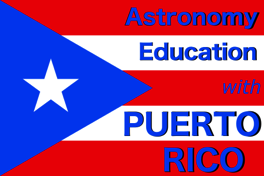I'm headed back to the South Pole to work on the IceCube neutrino detector !
Woops. Not happening. Too old, as it turns out. Disappointed? Yup.
This page is an introduction to what I'm doing. Look for links to follow up with more details...
--------------------------------------------------------------------------------------------------------------------------
You need to know that we're trying to use this to raise money to restore some
Astronomy Education capacity in PUERTO RICO!
I've set up a non-profit!
Please head to ASTRONOMY EDUCATION with PUERTO RICO to find out more.
I'm also working on ACDU (Autonomous Cosmic-ray Detecting Ukelele.
----------------------------------------------------------------------------------------------------------------------------------------
I got to go to the Pole in 2002, which is almost a lifetime ago. I did a lot of photography and videography. It all looks pretty old - my best camera, which died while I was there, was a 3 megapixel Olympus!
Here's my journals from 2002, with a lot of those pictures.
Here's another page with a gallery of panoramic photos, and my self-portrait from a KITE at the Pole.
Here's a YouTube playlist, with my 2002 movies. (YouTube didn't exist back then, btw!)
in 2002, the neutrino detector under construction was AMANDA (Antarctic Muon and Neutrino Detector). It was a test-of-concept to prove feasibility and secure funding for what would become the much larger IceCube Neutrino Telescope. As it turned out, a lot of the work I did at the Pole involved not holes in the ice, but a 1000 gallon ice tank on the surface, another prototype for what has now become an array of cosmic detectors on the surface of IceCube. This surface array is now called IceTop, and while capable of doing excellent cosmic ray science on its own, its primary function is to collect data which is subtracted from the IceCube signal, to filter out non-neutrino signal.
In June of 2018, I ended my 32 year career as a fulltime high school physics and astronomy teacher. We could talk about the state of public education in Seattle or the US, but I'll leave that for another time :). I became an informal science educator. And frankly, I was busier than ever.
In July, I returned to the University of Wisconsin-River Falls to lead our Upward Bound science program. Since before I went to the pole in 2002, we've run classes for teachers and students on multi-disciplinary polar science. The first years of classes were for teachers, and organized by Dr. Jim Madsen, who is now the head of Education & Outreach for IceCube. (He's got a nice TedTalk about neutrinos here). More than a decade ago, we shifted focus from classes just for teachers to classes for high school students from St. Paul, Mn. We've brought our IceCube & South Pole-bound teachers, as well as local preservice teachers from the River Falls area, and teachers from development organizations like the Knowles Foundation. It's been amazing run - we've tried to really push the envelope on science teaching. Here's a nice video Kate Miller, PolarTrec and Upward Bound teacher, did about our LED-and-sensor clothing project 2 summers ago.
One of last summer's highlights for me was the BIG IceCube announcement on July 9. We paused our regularly scheduled Upward Bound class (building and working with pinhole cameras, as an analog for more complex particle detectors), and tuned in. High energy neutrinos had been tracked back to one of nature's most powerful particle accelerators, a "blazar" structure emanating as a polar jet from a supermassive black hole at the center of a very distant galaxy. The news itself was thrilling, and it was equally thrilling to have personally played a (very) small part over nearly 2 decades in this work. I shed a couple of tears, not just for my own tiny part, but for the hard work and imagination of the thousands of folks all over the world involved over decades.
I'll mention in passing that while I lived in California in the last 90's, I had an opportunity to work for 2 summers as a teacher-researcher at the Physics Department at the University of California, Santa Cruz. Their big project was helping build a gamma-ray space telescope, subsequently named the Fermi Gamma-Ray Space Telescope. I did a bit of work on this, and it was wonderful to hear at IceCube's press conference that the Fermi played a crucial role in confirming IceCube's observations. Working at UCSC was a tremendous experience for me early in my physics teaching career, and I'd hope every science teacher is able to access similar opportunities.
This August after I got back home to Seattle, I built a solar-powered trailer with a big, tilting solar panel array and a recycled Nissan Leaf battery. I'll rent it for off-grid events, like a sustainable wedding, and for solar education - I 've got all kinds of solar and sustainability education demonstrations and activities I could do at a school. Check it out at www.solar2u.org.
One day, eating lunch and resting from drilling 1000 holes in aluminum stock, Jim rang me up, and told me that the educator who'd been in the pipeline to go to the Pole in 2018 had to withdraw for health reasons (hopefully, she'll be able to go next year), and would I be interested in filling in? YUP!
So, I've been pretty busy catching up. Catching up with the science, and catching up with PolarTrec, the National Science Foundation grantee that now supports and organizes teachers joining research experiences in the Arctic and Antarctic. By the way, any science teachers interested, you ought to check out PolarTrec and consider applying...
Even if you're not able or interested in doing PolarTrec yourself, each of the 100 or so teachers who's participated in the program over the last decade has journal pages on the PolarTrec website, with narrative, maps, movies, photos, science, relevant activities, and even data sets for students to analyze. And current teachers in the field typically do live webcasts from wherever they are, and you can join in from wherever you and your students are. My journal pages are here.
What will I be doing at the Pole in December 2018?
Well, journaling, webcasting, and taking photos and making movies, telling the story of physics research at the Pole. In 2002, I recall sitting around our little lab room with about 10 other physics folks after dinner. I asked the guy next to me, "So why do YOU think they sent a teacher all the way down here?" He thought for a moment, and replied,"Well, until you got here and started asking questions, I didn't know what any of these other folks did."
Shoveling snow. I love this answer, becasue it seem so absurd, sitting on snow 2 miles deep. But in fact, drift is a BIG problem at the Pole. Anything above the horizon eventually gets buried. In the polar summer, bulldozers work around the clock to move drift accumulation downwind of the station's buildings. Around any data cables, the digging has to be done by hand...I'm your guy.
IceCube construction ended a few years ago. But there are likely to be some maintenance tasks.
The Askaryan Radio Array IS UNDER CONSTRUCTION. I'm pretty sure I'll have some things to do there. Maybe hold tools for the folks that actually know what they're doing. :) The physics of this is rather new to me, and I'm already digging in. I'll have a lot more to say presently, I'm sure.

